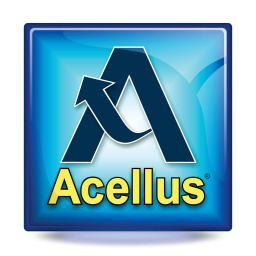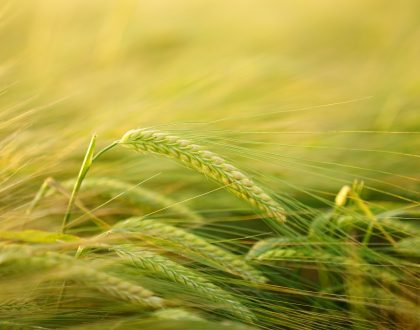Agriculture I

Course Features
Course Details
Course Overview
The largest industry in the United States, the field of agriculture is broad and all-encompassing. From food and clothing to cell phones and trucks, all are either agricultural in nature or derived and related to agriculture in some way. In the Acellus Agriculture I course, students begin with an introduction to this comprehensive industry, including an overview of its six sectors. Through the main body of the course, students enjoy an in-depth exploration of animal science, one of these six sectors. They learn what is involved in working with cows, horses, swine, sheep/goats, and poultry -- livestock and animals reared for produce. Students are also introduced to the FFA organization, and the opportunities and advantages it provides for those who choose a career in agriculture. Finally, students take a thorough tour through a wood and metal shop, learning what tools are found there, how they work, and what they are for. The Acellus Agriculture I course is taught by Acellus Instructor Callie Dobbins.
Sample Lesson - What is Agriculture?
 This course was developed by the International Academy of Science.
Learn More
This course was developed by the International Academy of Science.
Learn More
Scope and Sequence
Unit 1 - Introduction to Agriculture In this unit students are introduced to the field of agriculture. They discuss the six sectors of agriculture and sample careers within each. They explore the pervasiveness of agriculture in the development of common, everyday items. As they discuss these topics, they gradually zero in on and are introduced to one sector -- the field of animal science -- and take a more in-depth look at the careers it offers. Unit 2 - Beef Production In this unit students study beef production, beginning with industry terms and classifications, as well as parts, functions, and breeds of beef animals. They explore advantages and disadvantages, facilities and equipment, and the economic impact of beef production. They learn about common diseases, pests, and parasites in beef animals, and how to treat them. They investigate various production systems, evaluation and selection of the right animals for those systems, and products of beef production. They also review careers that are available in this field. Unit 3 - Swine Production In this unit students explore swine production. Similar to their study of beef animals, they discuss terms and classifications, animal parts and functions, and breeds of swine animals. They investigate the advantages and disadvantages of swine production, as well as facilities and equipment, and the ear notching system for identification. They learn about common diseases and their treatment, production practices, evaluation and selection, and products derived from swine animals. They also review careers in swine production. Unit 4 - Sheep/Goat Production In this unit students study sheep and goat production. They explore industry terms and classifications, as well as various breeds of sheep and goats. They learn about evaluation, selection, and production systems, flock health, and products derived from sheep and goats. Unit 5 - Horse Production In this unit students discuss horse production. They investigate the historical development of the horse, as well as terms, classifications, and breeds of horses. They study the evaluation and selection of appropriate animals for their herds. They explore the psychology and handling of horses, as well as herd health, facilities, and equipment needed for horse production. Unit 6 - Poultry Production In this unit students study poultry production. They discuss terms, classifications, production systems, and breeds of poultry. They also explore products of poultry production and careers in this field. Unit 7 - Animal Digestion, Nutrition, and Feeding In this unit students investigate animal digestion, feeding, and nutrition. They study the monogastric, ruminant, pseudo-ruminant, and avian digestive systems. They investigate animal feeds, feed types, and feed characteristics. They discuss essential nutrients including water, carbohydrates, lipids, proteins, minerals, and vitamins. They explore how to balance feed rations, the importance of feed analysis, and how to develop rations. Following this unit students are presented with the Mid-Term Review and Exam. Unit 8 - Animal Reproduction and Breeding In this unit students explore animal reproduction and breeding. They investigate male and female reproductive parts and functions, phases of reproductive development, reproduction basics, and the estrous cycle. They study fertilization in mammals, gestation length, parturition (the process of giving birth), and reproduction management practices. They learn about common breeding systems and the Genetic Inheritance Punnet Square. Unit 9 - The FFA In this unit students are introduced to the FFA, an organization designed to help agricultural education students to build leadership skills and to apply the knowledge they acquire in the classroom in meaningful and relevant ways. Students explore the FFA's three-circle model, which includes the FFA itself, the classroom experience, and the Supervised Agricultural Experience (SAE) program. They learn the history, structure, and traditions of the FFA. They discuss personal development, FFA activities, and degree areas in FFA. They learn about awards, career development events (CDE's), and leadership opportunities. They study the characteristics of a good FFA leader, the official FFA dress code, and parliamentary procedure. Unit 10 - Supervised Agricultural Experience (SAE) Programs In this unit students study Supervised Agricultural Experience (SAE) Programs -- planned agricultural activities that will help them to better develop skills and gain experience in specific agricultural career areas chosen by the students themselves. Students explore the four areas for SAEs: Entrepreneurship (owning and operating a business venture), Placement (working for someone else), Exploratory (exploring your options), and Research and Experimentation (finding and solving a problem). They investigate options for planning an SAE project, and discover how to overcome factors that might appear to prevent their project from happening. They discuss types of records they will keep as they do their SAE project, including financial records and production records, and they review how these records will help them to make good management decisions. Unit 11 - Wood and Metal Shop Agriculture has been defined as the development, production, processing, marketing, and distribution of food and fiber products. Within this definition are a huge number of tasks and activities that are not necessarily thought of under the umbrella of agriculture, but in reality, they make up an integral part of this vast industry. One such area of activity is working with wood and metal to create things -- from tools and furniture to fences, vehicles, and silos. In this unit students investigate the wood and metal shop. They explore shop safety, and learn what they can do with common hand tools including measurement and layout tools, cutting tools, smoothing and shaping tools, and fastening tools. They study the metal shear, metal bender, vise, spot welder, grinder, and buffer. They also discover how to use various kinds of drills, sanders, saws, and planers. In addition, they discuss measurement, project layout, project construction, and project finishing. Unit 12 - Arc Welding In this unit students explore arc welding, an activity that falls specifically under the Power, Structure, and Technical Systems sector of agriculture, but is used within most of the sectors. Students investigate the arc welding process, arc welding safety precautions, parts and set-up. They study types of arc welders, arc welding techniques, and laying a bead. Following this unit students are presented with the Final Review and Exam.
This course does not have any sections.





